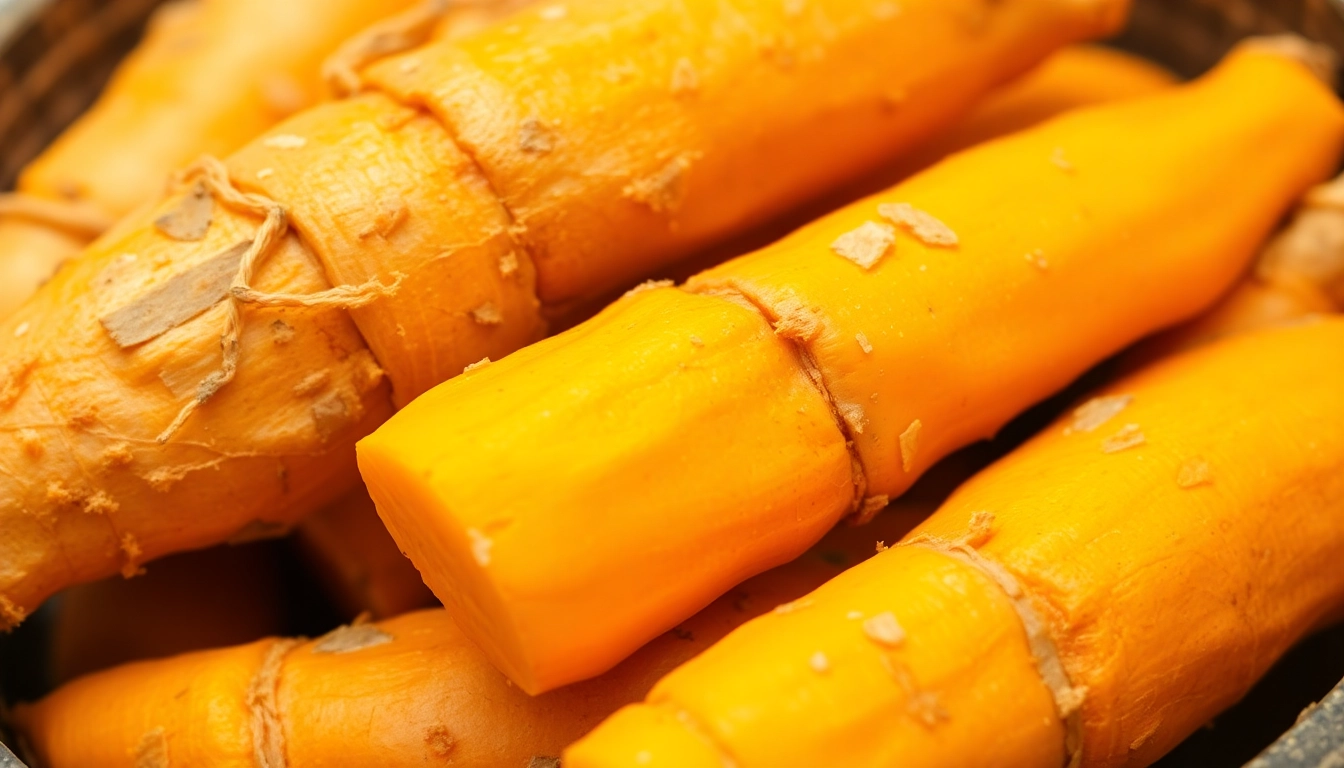Unlocking the Potential of Turmeric Finger: Nature’s Golden Treasure
Introduction
In the vast world of spices, few are as revered and versatile as turmeric. While most are familiar with turmeric powder, the fresh and unprocessed form known as Turmeric Finger offers unique benefits that elevate both culinary and health experiences. As a leading manufacturer and exporter of authentic spices and food products, Spice Nest emphasizes the importance of sourcing high-quality turmeric finger to unlock its maximum flavor, aroma, and health benefits. This comprehensive guide delves into the origins, selection, uses, and market trends surrounding turmeric finger, helping consumers and businesses alike harness its full potential.
Understanding Turmeric Finger: Nature’s Golden Spice
What is Turmeric Finger and How Is It Different?
Turmeric finger, also known as turmeric rhizome or turmeric stalks, refers to the fresh, whole, and unprocessed segments of the turmeric plant. Unlike turmeric powder, which is ground dried rhizomes, turmeric fingers retain their natural moisture, aroma, and nutritional profile, making them highly valued in traditional kitchens and health practices. They are characterized by their elongated shape, vibrant orange-yellow color, and firm texture.
The primary distinction between turmeric finger and powder lies in their form and application. While powders are convenient for quick seasoning, turmeric fingers offer a richer, more intense flavor and aroma, ideal for culinary techniques that emphasize freshness and authenticity. Additionally, turmeric fingers contain higher levels of essential oils and active compounds like curcumin, which are preserved during their fresh state.
Historical Uses and Cultural Significance
Historically, turmeric has been an integral part of Indian, Southeast Asian, and Middle Eastern cultures. Its use dates back over 4000 years, primarily in medicinal and spiritual contexts. Turmeric finger, being the fresh form, has been cherished in traditional Ayurvedic medicine for its healing properties, including anti-inflammatory, antioxidant, and antimicrobial effects.
In cultural rituals, turmeric is used during wedding ceremonies, festivals, and religious rites, symbolizing purity, prosperity, and auspicious beginnings. Its significance extends beyond cuisine, representing a holistic approach to health and well-being that spans millennia.
Health Benefits Supported by Scientific Research
Modern scientific studies have validated many traditional claims about turmeric’s health benefits. The bioactive compound curcumin, present in turmeric finger, exhibits potent anti-inflammatory and antioxidant properties. Research indicates that regular consumption of fresh turmeric can help reduce symptoms of arthritis, boost immune response, improve digestion, and even support liver detoxification.
Moreover, recent investigations suggest that turmeric finger’s higher essential oil content enhances absorption of curcumin, providing a more bioavailable form than dried powder. Incorporating fresh turmeric into your diet can thus be a strategic move toward holistic health optimization.
Selecting and Purchasing High-Quality Turmeric Finger
Key Indicators of Fresh and Authentic Roots
Quality turmeric finger is characterized by several key indicators:
- Color: Bright orange or deep yellow with a vibrant hue, indicating high curcumin content.
- Firmness: Firm and plump, not shriveled or soft, reflecting freshness.
- Odor: Rich, earthy aroma with a hint of spice; a dull smell can indicate old or degraded roots.
- Size and Shape: Uniform length and thickness with minimal blemishes or cracks.
Ensuring these features will guarantee the procurement of authentic, nutrient-rich turmeric finger.
Where to Buy Turmeric Finger: Best Markets and Suppliers
For premium quality turmeric finger, high-grade spices are available through reputable suppliers like Spice Nest, which has a robust presence at major food exhibitions worldwide. Wholesale markets in India, such as Gandhinagar, Guntur, and Kolkata, also offer authentic turmeric roots directly from cultivators. When purchasing for commercial purposes, it is critical to select certified suppliers who adhere to strict quality standards and possess relevant certifications, guaranteeing product authenticity and safety.
Tips for Proper Storage and Preservation
To maintain the freshness and medicinal properties of turmeric finger:
- Store in a cool, dry place away from sunlight, preferably in airtight containers or vacuum-sealed bags.
- Avoid refrigeration unless in extremely humid climates, as moisture can lead to mold.
- Keep away from strong odors, ensuring the turmeric’s natural aroma remains intact.
- Use within a few weeks of purchase to enjoy maximum flavor and health benefits.
Proper storage preserves the oil content and antioxidant properties, extending shelf life effectively.
Incorporating Turmeric Finger into Your Recipes
Popular Culinary Uses in Traditional and Modern Dishes
Turmeric finger enhances a variety of dishes, adding depth, color, and health benefits. In traditional Indian cuisine, it is used in curries, chutneys, and pickles, imparting a robust flavor. Its fresh state is ideal for preparing herbal teas, soups, and broths where vibrant taste and aroma are desired.
Modern recipes also embrace turmeric finger in smoothies, salads, and health tonics, capitalizing on its nutritional profile. Chefs often use grated turmeric finger for garnishing or infusing oils and vinegars to elevate flavor layers naturally.
Creative Recipes Featuring Turmeric Finger
Some innovative ways to utilize turmeric finger:
- Turmeric Finger Pickle: Marinate sliced roots with mustard seeds, chili, and salt for a tangy, health-boosting condiment.
- Fresh Turmeric Tea: Boil thin slices of turmeric with ginger and lemon for an immune-boosting beverage.
- Herbal Smoothie: Blend turmeric finger with pineapple, coconut milk, and honey for a nutritious drink.
- Turmeric Infused Oil: Gently heat sliced turmeric in oil for culinary and medicinal uses.
These recipes maximize flavor and preserve the natural goodness of the roots.
Enhancing Flavor and Nutrition with Proper Preparation
To optimize health benefits and flavor:
– Use freshly sliced turmeric finger rather than dried powder when possible.
– Lightly sauté or toast slices before adding to dishes to release essential oils.
– Pair with black pepper, which enhances curcumin absorption.
– Avoid overcooking; gentle simmering retains nutrients and aroma.
– Incorporate with fat-rich ingredients like ghee or olive oil for better bioavailability.
Health Enhancement Through Turmeric Finger Supplementation
Dosage Recommendations and Usage Tips
For medicinal or daily health benefits, a typical dosage of fresh turmeric finger is about 1-2 grams per day, equivalent to a few thin slices. It can be consumed directly, in teas, or added to foods. Always consult healthcare providers for personalized advice, especially for those on medication or with pre-existing conditions.
Potential Health Conditions Benefited
Regular intake of turmeric finger has shown promise in managing:
- Arthritis and joint pain
- Inflammatory bowel diseases
- Chronic inflammation conditions
- Skin ailments and infections
- Enhancement of cognitive functions
While promising, these benefits depend on consistent, appropriate use and individual health factors.
Risks and Precautions to Consider
Despite its safety, excessive consumption may cause gastrointestinal discomfort or interact with certain medications like blood thinners. Pregnant and breastfeeding women should seek medical advice before addition. Always source high-grade, certified turmeric finger to avoid contaminants and adulterants.
Market Trends and Export Opportunities for Turmeric Finger
Growing Demand in Global Markets
The global demand for turmeric, especially its fresh form like turmeric finger, is experiencing exponential growth driven by the rising popularity of natural remedies and clean-label products. Countries in the Middle East, Southeast Asia, Europe, and North America are increasingly sourcing authentic Indian turmeric finger to cater to health-conscious consumers seeking organic and natural food ingredients.
Export Regulations and Quality Standards
Exporters must comply with international standards such as ISO, WTO agreements, and specific phytosanitary requirements. Certification of organic cultivation, quality assurance, and proper packaging are crucial to meet importing country standards. Spice Nest’s certifications and participation in major food exhibitions position them as a trusted exporter in this competitive landscape.
Future Outlook and Investment Opportunities
The future of turmeric finger hinges on sustainable cultivation, improved supply chain logistics, and technology adoption for quality control. Investment in organic farming and globally certified processing units can further boost export potentials. As health awareness continues to grow, turmeric finger’s market share is expected to expand significantly in the coming years.

